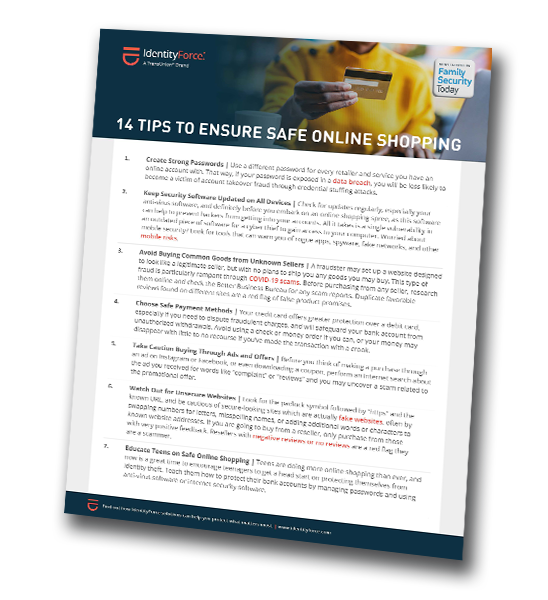Summary:
Online shopping may be more convenient than browsing in person, but it still carries risks to your security. In fact, the Federal Trade Commission (FTC) said online shopping scams were the second most reported fraud in 2020, resulting in $246 million in losses for consumers.
Whether it’s a fraudulent website or a cybercriminal posing as a legitimate retailer, it’s important to stay alert while making purchases online. Here’s how you can increase your personal security when shopping online:
- Create a different password for every retailer you have an online account with.
- Avoid buying from merchants whose websites are not secure. An attacker may set up a website designed to look like a legitimate seller of some novelty item like decorative gift baskets, handkerchiefs or other unique gifts. Before purchasing from them, search the internet for their legitimacy and check the Better Business Bureau for any scam reports. Duplicate favorable reviews on different sites are a red flag.
- Pay with a credit card as opposed to a debit card if possible. Your credit card offers greater protection if you need to dispute fraudulent charges.
- Only purchase from resellers with positive feedback. Resellers with negative reviews or no reviews are a red flag as they may be a scammer.
- Be highly suspicious of some long-lost relative or friend asking you for money; it could be a scammer pretending to be someone you know.
- Avoid financial transactions and online shopping when using public Wi-Fi. Identity theft is a real risk when you’re transmitting personal information over unsecured networks.
- Avoid using a check or money-order for making purchases. Like a debit card, these payments are treated as cash, so your money will disappear if you make the transaction with a scammer.
- Buy common items at big-name retailers who have secure sites (look for the padlock symbol followed by “https” for the URL).
- Ensure your computer and smartphone are fully protected with mobile security software, and keep apps updated.
- Back your data up regularly. If your devices are hacked, you’ll have all your data, especially if the attacker holds your files hostage with ransomware and demands payment for the decryption key needed to retrieve your files.
Payment App Security
Mobile payment apps are designed to free you from cash and credit cards by allowing you to digitally transfer funds to family, friends or merchants. You link your bank account or credit card information to the app on your phone or tablet. Your connected card is then used to pay when you tap, swipe or scan the app through e-commerce sites, in-store at the register or to transfer money to a person or business. These apps have become increasingly popular, with 93% of generation Z using mobile payment platforms on a monthly basis.
Mobile payment vendors are highly sensitive to payment security concerns, so they maintain robust controls to keep information safe. If you also employ mobile device security, these digital wallets can be safer than credit cards tucked into a traditional wallet or billfold.
Keep in mind that even with these types of controls in place, any mobile payment technology that collects all a user’s financial data in one place is likely too tempting for thieves to pass up. For frequent users of mobile payment apps, sending money to the wrong person or sending money to a scammer were the top two reported issues in 2022.
Don’t Leave Your Identity Unprotected
The key tasks to help protect yourself and your family from identity theft when shopping online comprise of increasing awareness of cyber scams, keeping your devices properly protected with a strong password and updated software and making sure all credit card activity has been authorized by you.
Even still, nobody can completely defend against identity theft, which is why you may want to consider a protection plan in place. Trust the best identity theft protection services from IdentityForce and get started with a 30-day trial. Check out our Online Shopping Tip Sheet that you can print and share with your friends and colleagues. The more people who are following safe online shopping practices, the better!





